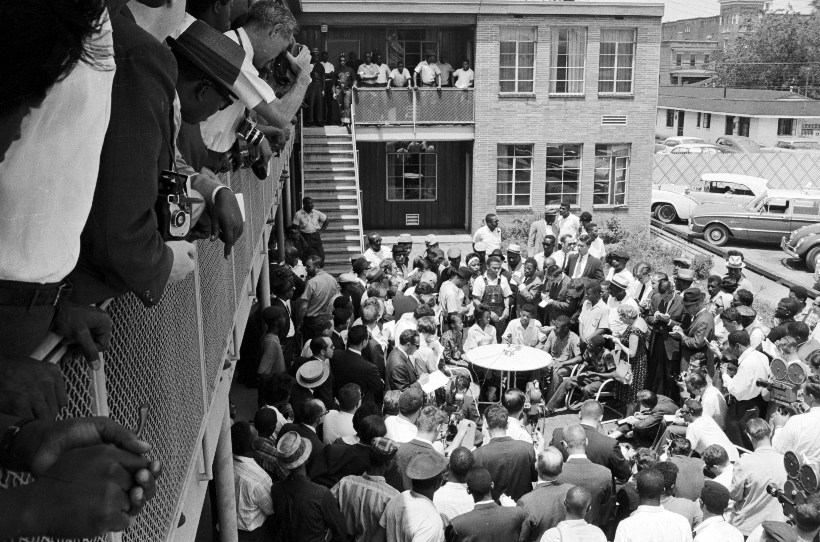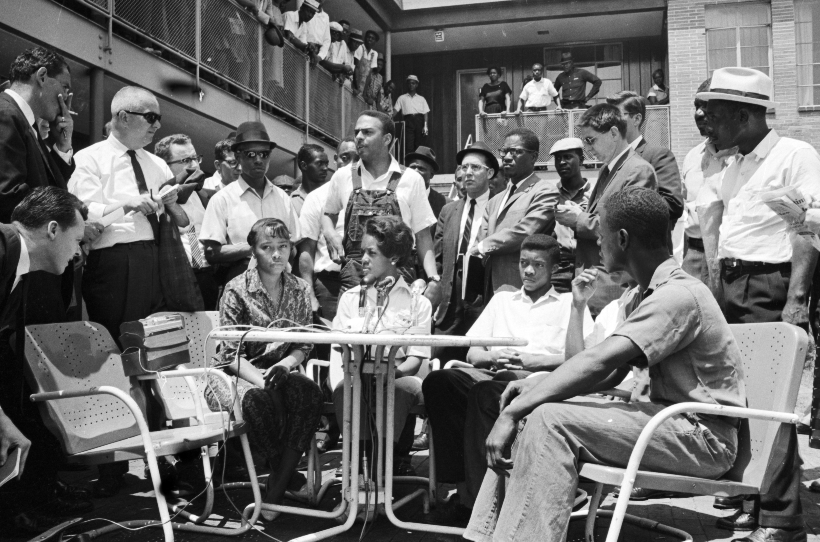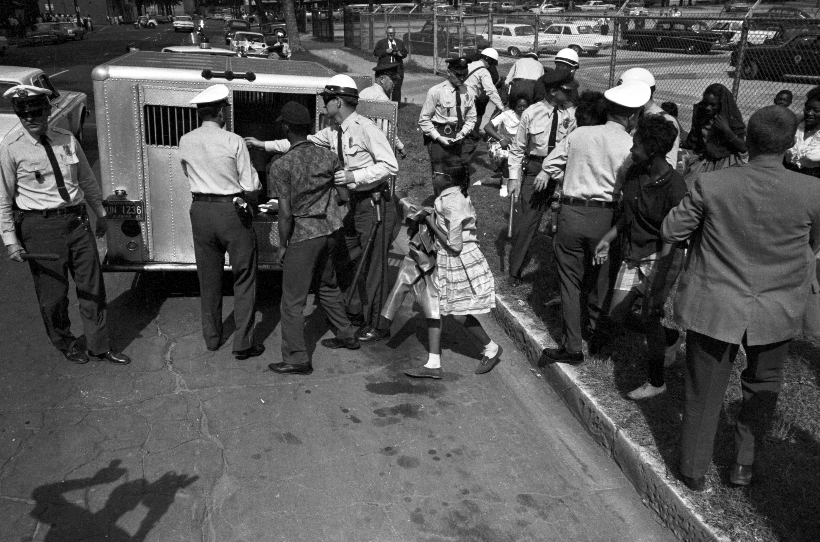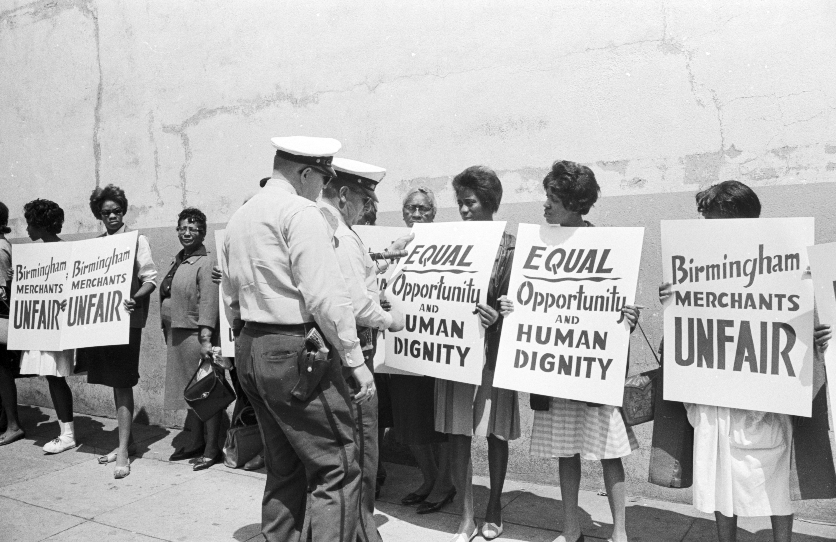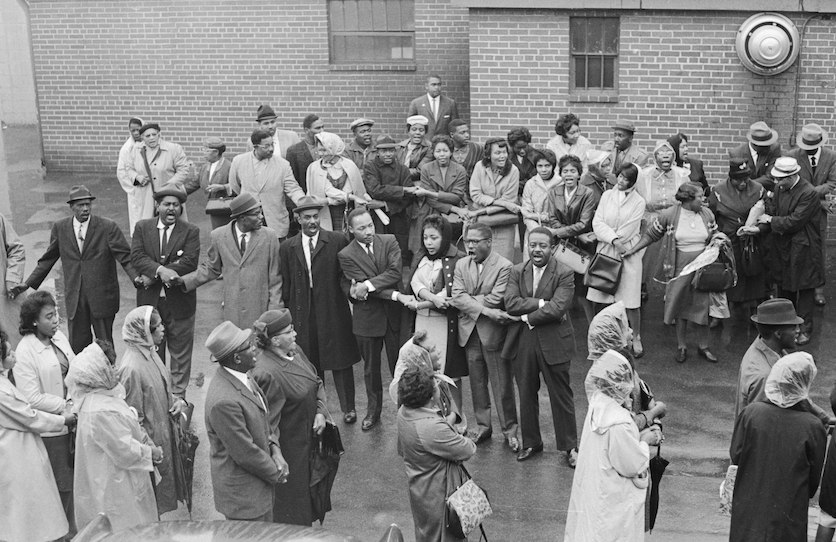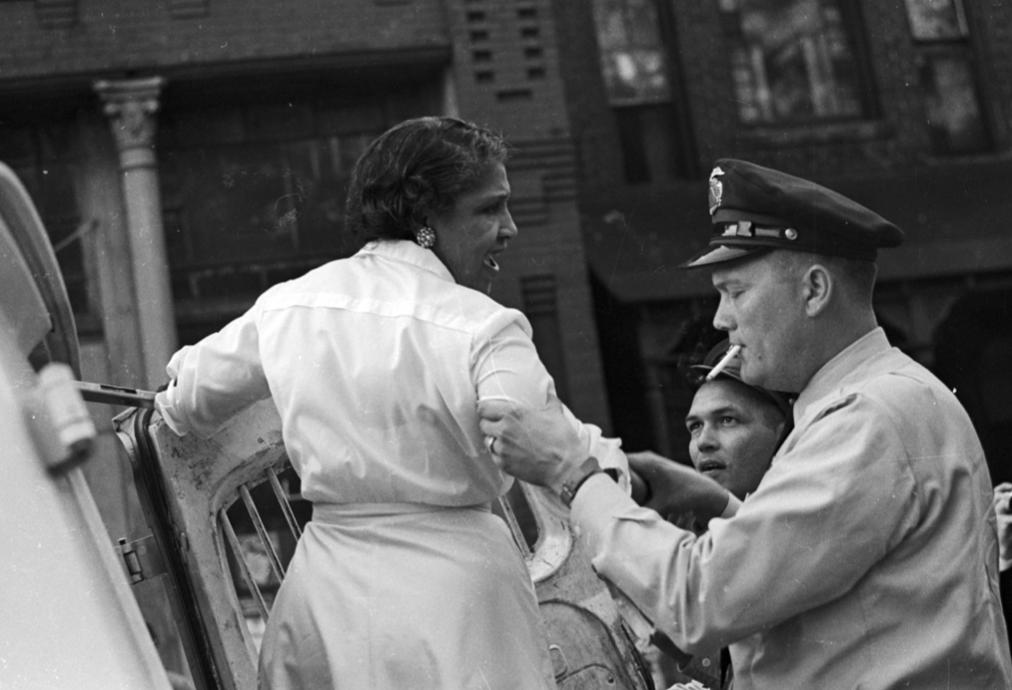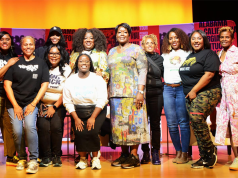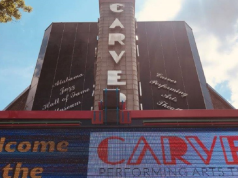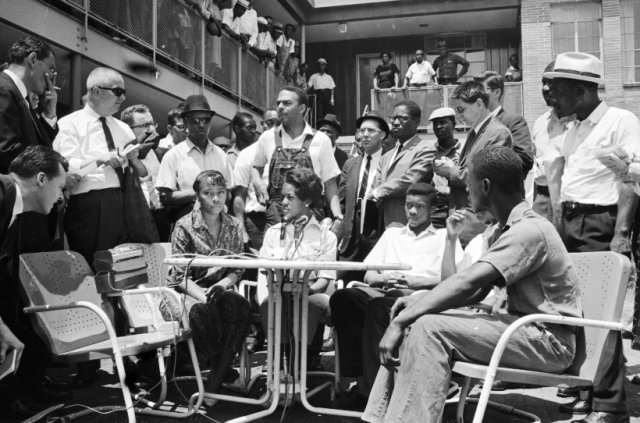
By Barnett Wright
The Birmingham Times
This story is part of a series of articles, “Bending Toward Justice,” focusing on the 60th anniversary of events that took place in Birmingham during 1963 that changed the face of the city, and the world, in the ongoing struggle for equality and human rights. The series name is a reference to a quote by the Rev. Martin Luther King Jr.: “Let us realize the arc of the moral universe is long but it bends toward justice.” The Birmingham Times and Alabama News Center will continue the series through 2023.
What began as a three-day retreat and planning session called by Dr. Martin Luther King in September 1962, helped lead the following year to dismantling segregation in Birmingham Alabama.
King, the Civil Rights icon gathered his Southern Christian Leadership Conference (SCLC) staff and board members at their training center in small town of Dorchester, near Savannah, Georgia. Along with Birmingham pastor The Rev. Fred L. Shuttlesworth, The Rev. Ralph Abernathy (SCLC secretary), and the Rev. Wyatt Tee Walker (King’s chief of staff), they began initial discussions concerning what would happen in Birmingham the following year in 1963.
In Birmingham, Shuttlesworth was a key figure in organizing resistance to segregation and discrimination.
He had founded the Alabama Christian Movement for Human Rights ACMHR, in 1956 to fill a hole left when the state of Alabama banned the National Association for the Advancement of Colored People (NAACP) for supposedly operating illegally as a “foreign corporation” and connections to communist organizers.
Beginning that year, Shuttlesworth organized weekly 30 “mass meetings” to coordinate direct protest actions against those who enacted and supported segregation in the city.
The meetings consisted of working-class churches…often drawing 300 to 400 people each week, and eventually thousands.
In 1962, these meetings led to the next phase of protest action—the citywide boycott of segregated merchants. The boycott was led by the Anti-Injustice Committee (AIC), whose membership was made up of local college students headed by Korean War veteran and Miles College student Frank Dukes. The AIC, with the support of Shuttlesworth, began the “Selective Buying Campaign,” after negotiations between the merchant community and the AIC and Blacks business leaders failed.
Though contentious amongst the Blacks upper and middle class, the boycott proved successful. As Andrew M. Manis states, the boycott “proved to both white and Blacks leaders in Birmingham that economic pressure could be brought to bear on the racial status quo. Perhaps even more significant, it developed a cadre of previously uninvolved students who became potential activists for a major direct action campaign the next year.”
The Next Stage
By 1962, the King saw Birmingham as the next logical stage for massive direct action. He was aware of the racial conditions in Birmingham and that the city was widely known as probably the most thoroughly segregated city in the United States.
Blacks experienced grossly unjust treatment in the courts. There had been more unsolved bombings of Negro homes and churches in Birmingham than in any other city in the nation among other issues.
King joined Shuttlesworth and other civil rights figures, who together conceived of a plan for 19 massive demonstrations, the likes of which had not been seen in Birmingham.
The organizers who met in Dorchester knew that only a well-organized protest campaign based on repeated meetings, discussions, and debates would bring about Birmingham’s desegregation. Further, it was clear that the conservative approach of behind-closed-doors politicking of local officials and businesspeople for eventual desegregation was not going to deliver freedom with any great speed or even certainty.
They called the campaign “Project C,” with “the ‘C’ [standing for] for Birmingham’s Confrontation with the fight for justice and morality in race relations.”
King later wrote that “[b]ecause of the significance of the job to be done in Birmingham, we decided that the most thorough planning and prayerful preparation must go into the effort.”1
The person in charge of the preparation was Wyatt Tee Walker. As author Taylor Branch notes, “King presided over the business sessions at Dorchester, but the initial presentation belonged to Walker” who as chief architect of Project C, developed a four-stage strategy for the campaign: First, they would launch small-scale sit-ins to draw attention to their desegregation platform, while building strength through nightly mass meetings. Second, they would organize a generalized boycott of the downtown business section and move to slightly larger demonstrations. Third, would move up to mass marches both to enforce the boycott and to fill the jails. Finally, if necessary, they would call on outsiders to descend on Birmingham from across the country, as in the Freedom Rides, to cripple the city under the combined pressure of publicity, economic boycott, and the burden of overflowing jails.
King wrote that Birmingham had been the country’s “chief symbol of racial intolerance,” and felt strongly that the desegregation of the city would “set forces in motion to change the entire course of the drive for freedom and justice.”2
Though the initial planning stages for the protect campaign occurred in Dorchester, organizers needed a Birmingham location in which they could coordinate the protest campaign.
A.G. Gaston Motel
If the training center in Dorchester was the start of the campaign then the A.G. Gaston Motel in downtown Birmingham was the logical choice for the climatic endgame. In Room No. 30 leaders held their regular Project C strategy sessions. While there were other Black-only hotels and motels in the area, Gaston’s motel offered unrivaled accommodations.
Several of the civil rights leaders recalled how well-furnished and professional the motel was, and how it was in many ways equal to whites-only motels.
King himself referred to Room 30 as “my room” and the room that “housed” him and Abernathy.3
As a result of the “daily news conferences announcing plans and successes” that took place in the motel’s patio area, the motel became “as well known to America in 1963 as any other Birmingham landmark.”
For his part, A.G. Gaston was also involved with the civil rights movement, but his approach was far more conservative, mirroring that of Birmingham’s Blacks middle class and clergy.
For years, Gaston sought to elevate the financial and professional standing of Blacks people through education and employment. Immediately prior to King’s arrival in the city, Gaston was involved in many negotiations with city officials and merchants concerning phased desegregation.
He viewed the impending protests in Birmingham with distrust, knowing it would give Bull Connor, the Commissioner of Public Safety for the City of Birmingham, Alabama, free reign to retaliate. Gaston, an exemplar of the rags-to-riches story still “knew what Blacks Birmingham meant when it called for ‘equality,’ even if he didn’t always agree with the methods used to secure it.” 4
Gaston was also not shy about letting it be known he opposed such methods and was unwilling to verbally support the SCLC due to its supposed confrontational tactics. The accommodationist position of Gaston and the majority of Birmingham’s upper classes was ill-received among various civil rights leaders.
Gaston’s stance earned him an “Uncle Tom” label that stuck with him for years. Nevertheless, Gaston offered a modest lodging discount to the organizers and provided additional meeting space in his nearby office building.
In April 1963, Project C began by occupying lunch counters, resulting in a small number of arrests. The modest start was strategic as to slowly build the momentum of the movement. Soon more sit-ins took place, as did limited marches. Then on Good Friday, King and Abernathy led a group of 50 marchers in defiance of a court order barring demonstration. They made it several blocks before police arrested the marchers and took them to the Birmingham Jail. Here, after a day in solitary confinement, King wrote his seminal “Letter From Birmingham Jail.”
New Tactic
After the Good Friday march, however, organizers realized that support for the campaign was waning and they had to develop an innovative approach.
The new tactic employed Birmingham’s Blacks children who, beginning on May 2, began a series of Children’s Marches throughout the city. Marching from Kelly Ingram Park towards City Hall and the Retail District, the marchers were met with outright brutality by Bull Connor and the Birmingham police force.
Connor unleashed both police dogs and water hoses on the young demonstrators, trying to contain them in Kelly Ingram Park. Scores of children were arrested. The news media was present to document the scene, and the “photographs and televised coverage of the brutal hosing of children sickened viewers and gained a new visibility for civil rights issues.” 5 The marches continued for six more days, until on May 8, a temporary moratorium was issued by the campaign in order to negotiate a solution. Throughout the protests, Gaston was frustrated. Desiring a more peaceful solution, Gaston wanted to hash out differences through meetings and negotiations However, when he saw the children getting blasted with water by the police, Gaston was incensed, “turning him from a reluctant participant in the rush toward desegregation into a powerful, visible broker of peace in his city.”6
This did not mean Gaston would participate in the remaining marches, but rather found other ways to help, including paying over $160,000 to bail out scores of jailed protesters.
Further, Gaston was instrumental in pushing for the compromise that developed following the cessation of demonstrations.
Partial Victory
On May 10, 1963, King, Abernathy, and Shuttlesworth held a news conference in the courtyard of the Gaston Motel, officially announcing the truce that had been negotiated on the 7th. The truce produced a watered-down version of the original list of demands issued by the campaign a month earlier. The original list called for immediate desegregation of lunch counters, restrooms, and other facilities. The compromise however provided “no ‘immediate’ moves in any direction.” 7
Instead, a months-long timetable replaced the stronger language. Shuttlesworth, who had been hospitalized after injuries sustained during the protests, was not a part of the final negotiations and was unhappy with the concession, as it contained no language requiring the merchants to pressure the city government to support desegregation as well.
While the main parties involved reluctantly accepted the truce, the white terrorist elements of the city—principally the National States’ Rights Party along with Bull Connor—did not agree whatsoever with the deal. “The group picketed stores that desegregated lunch counters, and Connor had frequent meetings attacking those who showed any willingness to accept desegregation.”
The day after King announced the truce, terrorists attacked the A.G. Gaston Motel, detonating a bomb on the west side of the accommodations building. The bomb targeted Room 30 in an attempt to assassinate King and Abernathy. However, the leaders had just left for Atlanta, and the room was empty, though four people were slightly injured.
After the bombing, a major uprising transpired in the city. Thousands of participants gathered in Kelly Ingram Park and proceeded to protest the bombing and their lack of freedom. The police descended on the protestors, severely beating them with clubs and corralling many of them in the motel parking lot. These demonstrations in Birmingham inspired hundreds of solidarity protests throughout the country over the next ten weeks.
Over the summer of 1963, more bombings and attempted bombings took place throughout the city. In September, the Gaston residence was firebombed, terrifying his wife Minnie and nearly destroying their house. While the bombing of the motel, the Gaston residence, as well as all the other bombings the city had experienced were traumatic, they paled in comparison to the bombing of the Sixteenth Street Baptist Church, in which four girls were killed and many others injured. Afterward, King and Gaston were emotionally devastated, but again, both approached the situation differently. King wanted federal troops and more demonstrations, Gaston wanted to hash things out internally, without “outsiders” like King involved. Without the support of the Blacks elite in the city, King backed off.
Change in Birmingham
After the assassination of President John F. Kennedy in November 1963, Lyndon Johnson became president. He continued Kennedy’s push for equal rights for Black citizens, and less than a year later was able to gain enough support for the passage of the landmark 1964 Civil Rights Act. The law changed the face of America. It outlawed discrimination based on race, color, religion, sex or national origin; outlawed racial segregation in schools, at the workplace and at all places that served the public like libraries, parks, swimming pools; ended race-based and unequal requirements to block Blacks from registering to vote.
It can be credited to the events in Birmingham in the spring of 1963 when Blacks rose up to oppose the city’s Jim Crow legal system in demonstrations that began in earnest in May of that year with beginnings at a private meeting in Dorchester, GA and culminated with historic meetings at the A.G. Gaston Motel in Birmingham Alabama.
Source: Information A.G. GASTON MOTEL Birmingham Civil Rights National Monument CULTURAL LANDSCAPE REPORT Prepared for Historical Preservation Authority of the City of Birmingham Prepared by WLA Studio APRIL 19, 2019
For a comprehensive look at the history and rebuild of the A.G. Gaston Motel in Birmingham AL visit clr-gaston-motel.pdf (npshistory.com)
1 Martin Luther King, Jr., Why We Can’t Wait, (Boston: Beacon Press, 2010),
2 Martin Luther King, Jr., Why We Can’t Wait, (Boston: Beacon Press, 2010),
3 Martin Luther King, Jr., Why We Can’t Wait, (Boston: Beacon Press, 2010),
4 Carol Jenkins and Elizabeth Gardner Hines, Black Titan: A.G. Gaston and the Making of a Black Millionaire, (New York: Ballentine Books, 2004)
5 Birmingham Historical Society, “Birmingham Civil Rights Historic District,” (National Register of Historic Places Inventory/Nomination Form, 2006)
6 Carol Jenkins and Elizabeth Gardner Hines, Black Titan: A.G. Gaston and the Making of a Black Millionaire, (New York: Ballentine Books, 2004)
7 Carol Jenkins and Elizabeth Gardner Hines, Black Titan: A.G. Gaston and the Making of a Black Millionaire, (New York: Ballentine Books, 2004)



